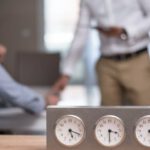Podcasting has become an increasingly popular medium for sharing content and reaching a wide audience. Whether you are an aspiring podcaster looking to start your own show or a seasoned pro looking to upgrade your equipment, having the right tools is essential for producing high-quality audio content. In this article, we will explore the essential equipment you need to start podcasting and take your show to the next level.
**Microphone**
The most crucial piece of equipment for podcasting is a high-quality microphone. A good microphone will ensure that your voice is clear and crisp, making it more enjoyable for your listeners. There are several types of microphones to choose from, including USB mics, dynamic mics, and condenser mics. USB microphones are convenient for beginners as they can be plugged directly into your computer without the need for additional equipment. Dynamic mics are durable and work well in noisy environments, while condenser mics are more sensitive and capture more detail in sound.
**Headphones**
Investing in a good pair of headphones is essential for podcasting. Headphones allow you to monitor your audio in real-time, making it easier to catch any issues such as background noise or audio distortion. Closed-back headphones are ideal for recording as they block out external noise and prevent sound leakage, ensuring a clean recording.
**Audio Interface**
An audio interface is a device that connects your microphone to your computer and converts analog audio signals into digital data. This is essential for achieving high-quality sound recordings with professional-grade microphones. Look for an audio interface with XLR inputs for connecting multiple microphones and adjustable gain controls for fine-tuning your audio levels.
**Pop Filter**
A pop filter is a simple yet essential tool for podcasting. It is a screen that attaches to your microphone and helps reduce plosive sounds such as “p” and “b” sounds. This can make a significant difference in the clarity of your recordings and improve the overall quality of your audio.
**Boom Arm**
A boom arm is a flexible microphone stand that attaches to your desk or table, allowing you to position your microphone closer to your mouth for optimal sound quality. This helps reduce background noise and ensures that your voice is captured clearly and consistently throughout your recording.
**Recording Software**
To record and edit your podcast episodes, you will need recording software. There are many options available, ranging from free to paid software with advanced features. Audacity is a popular free option that offers basic recording and editing tools, while Adobe Audition is a more advanced software used by professional podcasters for its extensive editing capabilities.
**Acoustic Treatment**
Creating a dedicated recording space with proper acoustic treatment can significantly improve the sound quality of your podcast. Acoustic foam panels, bass traps, and soundproofing materials can help reduce echo, background noise, and outside interference, creating a more professional and polished sound for your show.
**Conclusion**
Starting a podcast requires a minimal investment in essential equipment to ensure that your audio content is of high quality. By investing in a good microphone, headphones, audio interface, pop filter, boom arm, recording software, and acoustic treatment, you can create professional-sounding podcasts that engage and captivate your audience. With the right tools and equipment, you can take your podcasting journey to the next level and produce content that stands out in the crowded podcasting landscape.





